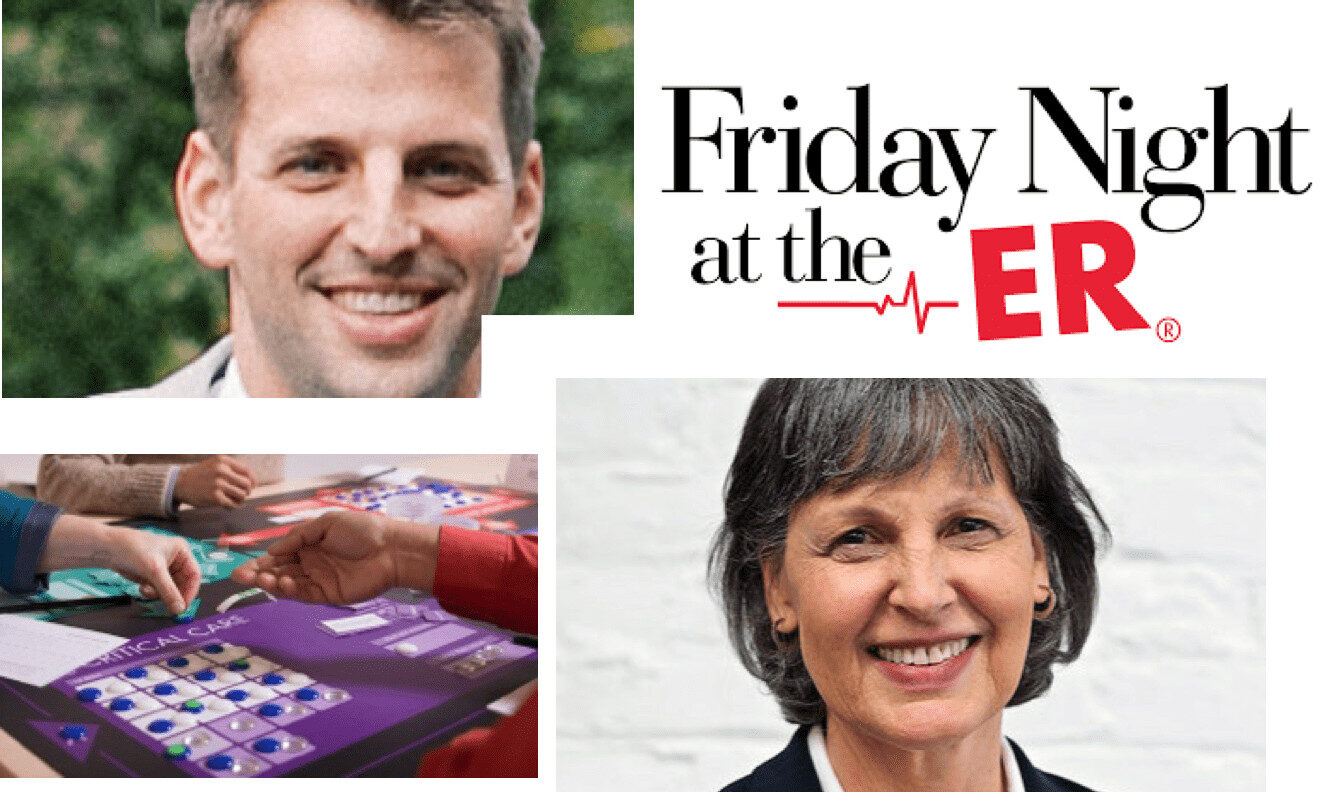
My guests for Episode #328 are Bette Gardner and Jeff Heil, of the company Breakthrough Learning. Bette is the creator of a fantastic simulation called “Friday Night at the ER” — which I've blogged about. When we recorded the webinar, Bette was CEO and Jeff was COO, but recently Jeff took over the CEO role. They are also, as they mention, mother and son… which will be followed by an upcoming podcast with a father and son team (two of the authors of this book).
In this episode, we talk about Bette's inspiration for the simulation, systems thinking, and healthcare improvement. We'll also talk about how the simulation is used by organizations in many industries as a way of teaching systems thinking principles.
Streaming Player:


For a link to this episode, refer people to www.leanblog.org/328.
For earlier episodes of my podcast, visit the main Podcast page, which includes information on how to subscribe via RSS, through Android apps, or via Apple Podcasts. You can also subscribe and listen via Stitcher or Spotify.
New! Subscribe and listen with Spotify:
Questions and Topics:
- Introductions and backgrounds
- Bette: Healthcare policy research, hospital management
- Jeff: Design background
- Bette: Can you please tell the story about creating FNER?
- Inspiration from MIT, Peter Senge, and management simulations? Similar to People Express simulator (computer) and The Beer Game (tabletop)
- Created on the back of a napkin?
- Jeff: When did you get involved with the company and why?
- Updated and modernized the game
- Bette: What are some of the other key lessons learned or taught through FNER?
- Is this used outside of healthcare organizations?
- Jeff: Can you share some examples
about how FNER is used?- Collaboration, innovation, data-driven
- “Structure drives behavior”
- Bette: When I blogged about FNER, somebody raised a broader systems issue about inappropriate (or non-ideal) use of the ER (people without insurance, those who can't get convenient appointments, etc.)… I replied that the point of the simulation isn't to be 100% realistic to the real world…
- Bette: What are your thoughts on designing a simulation that's “realistic enough” and how do you find that balance?
- “Gross simplification of reality” can be a helpful learning simulation
Videos About “Friday Night at the ER”
Thanks for listening!
What do you think? Please scroll down (or click) to post a comment. Or please share the post with your thoughts on LinkedIn – and follow me or connect with me there.
Did you like this post? Make sure you don't miss a post or podcast — Subscribe to get notified about posts via email daily or weekly.
Check out my latest book, The Mistakes That Make Us: Cultivating a Culture of Learning and Innovation:










